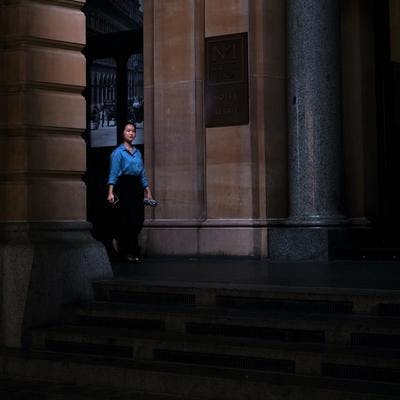
What Makes Luxury Brands Unique?
Luxury brands distinguish themselves from their competitors in several ways. First and foremost is the perception of high quality. Whether it's a designer handbag, a high-end car, or a bottle of vintage wine, luxury brands are synonymous with top-notch craftsmanship and superior materials. This perception often allows these brands to command higher prices and, consequently, higher profit margins.
Another defining trait of luxury brands is their timeless appeal. Unlike trends that come and go, luxury brands often have a long-standing heritage and a reputation that withstands the test of time. This enduring appeal can provide a degree of stability in your investment portfolio.
Lastly, the exclusivity of luxury brands plays a significant role in their appeal. The high price tag and limited availability of these products create an aura of exclusivity, which can be a powerful draw for consumers seeking to distinguish themselves from the crowd.
Why Invest in Luxury Brands
Investing in international luxury brands can offer several advantages. For one, it provides an opportunity to tap into the strong demand for luxury goods in emerging markets. As wealth increases in regions like Asia and the Middle East, the appetite for luxury brands is also growing. By investing in these brands, you can position yourself to benefit from this trend.
In addition, luxury brands often fare better during economic downturns compared to their lower-end counterparts. This is because luxury consumers, who are usually wealthier, tend to be less affected by economic fluctuations. As a result, luxury brands can provide a degree of resilience in your investment portfolio during challenging economic times.
Lastly, investing in luxury brands can also offer a way to diversify your investment portfolio. By adding these brands to your portfolio, you can spread your risk across different sectors and geographical regions, helping to protect your investments against market volatility.
Before you embark on investing in international luxury brands, it's crucial to conduct thorough research and understand the dynamics of the luxury market. You may also want to consider diversifying your investments across different luxury brands and regions to spread your risk. For more insights on international investing, check out our articles on investing in emerging economies and diversifying internationally.
Understanding the Luxury Market
When it comes to investing in international luxury brands, it is of paramount importance to first gain a comprehensive understanding of the luxury market. This will provide you with insights into the global luxury market landscape and the key factors that influence it.
The Global Luxury Market Landscape
The global luxury market is a lucrative sector with an expansive global reach. It encompasses a wide range of products and services, including high-end fashion and accessories, luxury vehicles, premium cosmetics, and fine dining.
According to recent reports, the global luxury market is projected to grow significantly in the coming years. This growth is mainly driven by increasing consumer wealth, especially in emerging markets, and the growing demand for luxury goods and experiences.
| Year | Global Luxury Market Size (in billion USD) |
|---|---|
| 2020 | 217 |
| 2021 | 285 |
| 2022 (projected) | 338 |
The luxury market is not just limited to developed economies. Emerging markets, such as China, India, and Brazil, are becoming increasingly significant in this sector. For more insights into investing in emerging economies, you can refer to our guide on investing in emerging economies.
Key Factors Influencing the Luxury Market
Several factors influence the luxury market, and understanding these can help you make informed decisions about investing in international luxury brands.
- Economic Conditions: The state of the global economy significantly impacts the luxury market. During periods of economic growth, the demand for luxury goods and services usually increases.
- Consumer Preferences: Trends in consumer preferences can dictate the success of luxury brands. Rapid changes in fashion trends, for example, can significantly impact the performance of luxury fashion brands.
- Technological Advances: Technology plays a crucial role in shaping the luxury market. Innovations in e-commerce, digital marketing, and manufacturing can create new opportunities for luxury brands.
- Geopolitical Factors: Changes in trade policies, political instability, and fluctuations in exchange rates can impact the luxury market. These factors can affect the cost of production, pricing strategies, and the profitability of luxury brands.
- Social Factors: Social trends, such as the growing awareness of environmental issues and the increasing demand for ethical and sustainable products, can influence consumer behaviour in the luxury market.
By keeping these factors in mind, you can better navigate the complexities of the luxury market and identify potential investment opportunities. For more information on international investing strategies, check out our guide on international investing strategies.
Investing in International Luxury Brands
In the realm of international investment, luxury brands offer a unique opportunity for building a diverse and potentially lucrative portfolio. However, as with any investment, it's crucial to understand the advantages and potential risks associated with this type of investment.
Advantages of Investing in International Luxury Brands
Investing in international luxury brands can offer several advantages:
- Diversification: Investing in international luxury brands allows you to diversify your investment portfolio. This means spreading your investments across different geographic regions and industries, which can help reduce investment risk. You can learn more about the benefits of diversification in our article on diversifying internationally.
- Resilience: Luxury brands often demonstrate resilience during economic downturns. Even in challenging economic times, high-net-worth individuals tend to maintain their consumption of luxury goods, supporting the revenues of these brands.
- Growth Potential: The international luxury market is projected to grow, driven by increasing wealth in emerging markets and a growing appetite for luxury goods among younger consumers. This could translate into impressive returns for investors.
- Brand Value: Luxury brands often have strong brand recognition and a loyal customer base, which can lead to consistent sales and revenue growth.
Risks Associated with Investing in International Luxury Brands
While investing in international luxury brands can offer significant benefits, it's important to be aware of the potential risks:
- Market Volatility: International markets can be subject to volatility, which can affect the performance of luxury brands. This can be influenced by a range of factors, from economic conditions to political instability.
- Currency Risk: When investing internationally, you're exposed to currency risk. If the currency in the country where you're investing depreciates against your own, the value of your investment can decrease.
- Regulatory Risk: Different countries have different regulations when it comes to business operations and investments. Changes in these regulations can impact your investment.
- Consumer Trends: Luxury brands can be impacted by changing consumer trends and preferences. A shift away from the products offered by a particular brand can affect its profitability.
While these risks shouldn't discourage you from investing in international luxury brands, they underscore the importance of thorough research and careful planning. Be sure to read our articles on international investing strategies and global investment opportunities to equip yourself with the knowledge you need to make informed investment decisions.
Key Considerations in Investing
Investing in international luxury brands requires careful consideration and planning. Here are some key factors you need to look into before making your investment decisions.
Market Research and Analysis
When investing in international luxury brands, conducting thorough market research and analysis is crucial. You should understand the dynamics of the luxury market, including consumer behaviour, market trends, and competitive landscape. It's advisable to leverage professional market research reports, industry publications, and investment analysis tools to evaluate the market potential of the international luxury brands you're interested in. Also, keep an eye on the economic climate and political stability of the countries where these brands operate. Our guide on international stock market analysis provides insights on how to perform a comprehensive market analysis.
Diversification and Risk Management
Diversification is a key strategy in risk management. Rather than investing all your money in a single brand or country, consider spreading your investments across multiple brands and geographic locations. This can help mitigate risks associated with market volatility, economic downturns, or unforeseen events in a specific country or sector. You might want to explore international ETFs, international mutual funds, or investing in emerging economies as part of your diversification strategy. Check out our guide on diversifying internationally for more tips.
Regulatory Aspects and Compliance
When investing internationally, it's essential to understand the regulatory aspects and compliance requirements in the markets you're investing in. This involves knowing about tax implications, foreign investment regulations, and legal obligations. Non-compliance can lead to legal issues and financial losses. Therefore, it's recommended to consult with a financial advisor or a legal expert who is well-versed in international investment regulations. Additionally, staying updated with changes in international trade policies and market regulations can help you make informed investment decisions.
Investing in international luxury brands can offer significant returns, but it's not without its challenges. It requires careful planning, diligent research, risk management, and an understanding of regulatory aspects. By considering these factors, you'll be better prepared to navigate the complexities of international investing and make sound investment decisions.
Steps to Start Investing in International Luxury Brands
Investing in international luxury brands can be a lucrative endeavour, but it requires careful planning and strategic decision-making. Here are some steps to guide you through the process.
Identifying Potential Investment Opportunities
The first step in investing in international luxury brands is to identify potential investment opportunities. You should research the global luxury market and identify brands that are performing well and have a strong presence in their respective markets.
Consider the brand's market positioning, financial health, growth prospects, and competitive landscape. Look for brands that have a strong brand image, high customer loyalty, and a track record of delivering quality products.
Additionally, consider the geographical location of the brands. Brands based in emerging markets may have high growth potential due to increasing consumer wealth and changing lifestyle preferences. For more insights on this, you can refer to our articles on investing in emerging economies and investing in BRICS countries.
Evaluating Investment Potential
Once you've identified potential investment opportunities, the next step is to evaluate their investment potential. This involves conducting a thorough financial analysis of the brand, including reviewing their financial statements, assessing their profitability ratios, and analysing their cash flow statements.
Consider factors such as the brand's revenue growth, profit margins, return on equity, and debt levels. A brand with strong financial health is likely to deliver better investment returns.
You should also consider the brand's strategic direction and growth strategies. Brands that are innovating and expanding into new markets may offer higher growth potential. For more on evaluating investment potential, refer to our article on international stock market analysis.
Making the Investment Decision
After evaluating the investment potential of the brands, the final step is to make the investment decision. This decision should be based on your investment goals, risk tolerance, and investment horizon.
Consider diversifying your investment portfolio by investing in a mix of luxury brands from different sectors and geographical locations. Diversification can help to spread risk and improve potential returns. For more on this, refer to our article on diversifying internationally.
You should also consider the tax implications and regulatory aspects of investing in international luxury brands. Ensure that you comply with all regulatory requirements and understand the tax implications of your investments.
Finally, remember that investing in international luxury brands, like all investments, involves risks. You should be prepared to accept these risks and make informed investment decisions. For more on risk management, refer to our articles on investing in international luxury brands.
Tips for Successful Investment in Luxury Brands
When it comes to investing in international luxury brands, having a solid strategy in place can significantly increase your chances of success. Below are some tips to guide you on your investment journey.
Keeping Abreast with Market Trends
Staying informed about the latest market trends is vital when investing in luxury brands. Trends can indicate consumer preferences, market growth, and potential investment opportunities. Understanding these trends can help you make informed decisions and identify the best investment prospects.
Regularly read industry reports, financial news, and luxury brand analyses to stay up-to-date with the latest developments. Attending industry conferences and webinars can also provide valuable insights into market trends and future prospects.
Regular Monitoring and Review of Investments
Once you've made your investments, it's important to regularly monitor and review them. This will enable you to track their performance, make necessary adjustments, and take advantage of new opportunities as they arise.
Set up a system for tracking your investments and review it on a regular basis. This could involve using investment tracking software or hiring a financial advisor to assist you. Don't forget to also review the overall performance of the luxury market to assess how your investments are performing in relation to it.
Knowing When to Exit an Investment
Knowing when to exit an investment is just as important as knowing when to enter. If a luxury brand is underperforming consistently or the market conditions have changed unfavorably, it might be time to consider selling your investment.
Look out for key indicators such as a significant drop in sales, negative press coverage, or changes in management. Exit strategies can vary depending on your investment goals and the specific circumstances, so it's important to have a plan in place.
Investing in international luxury brands can be a rewarding venture if approached correctly. Keep these tips in mind as you navigate the world of luxury brand investing. Remember, every investor's journey is unique, so it's important to find a strategy that works best for you. For more information on investing internationally, check out our articles on global investment opportunities and diversifying internationally.




